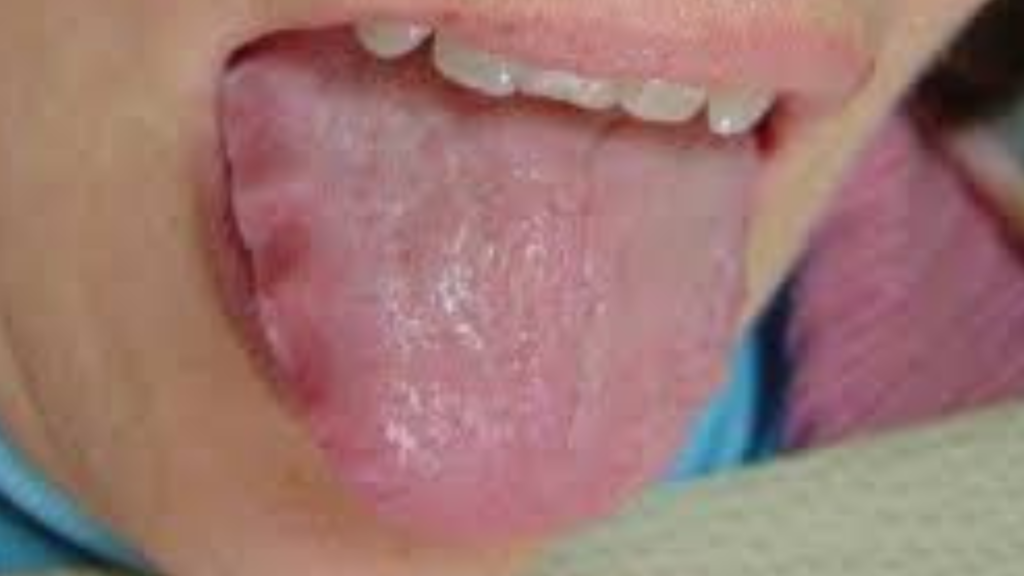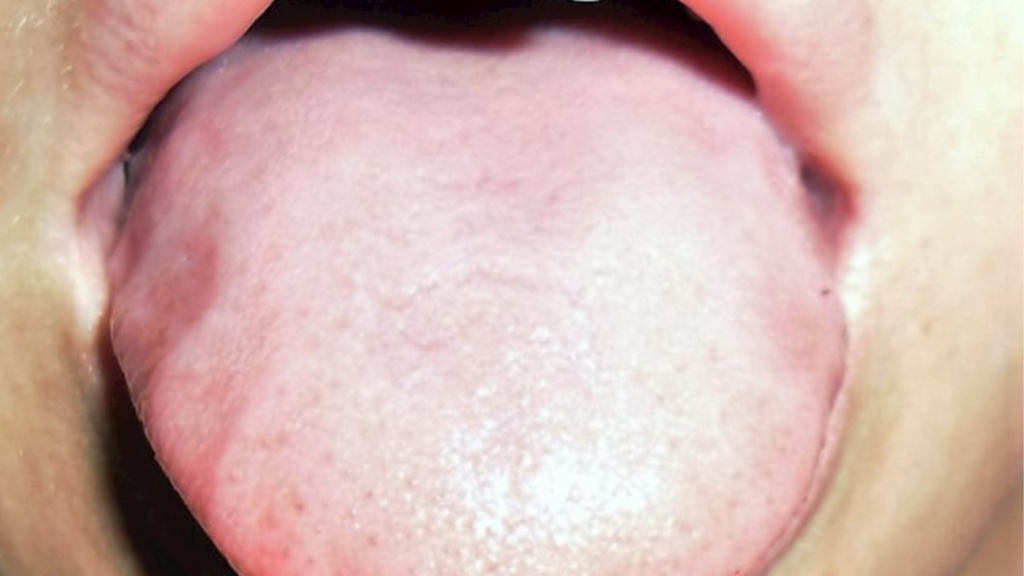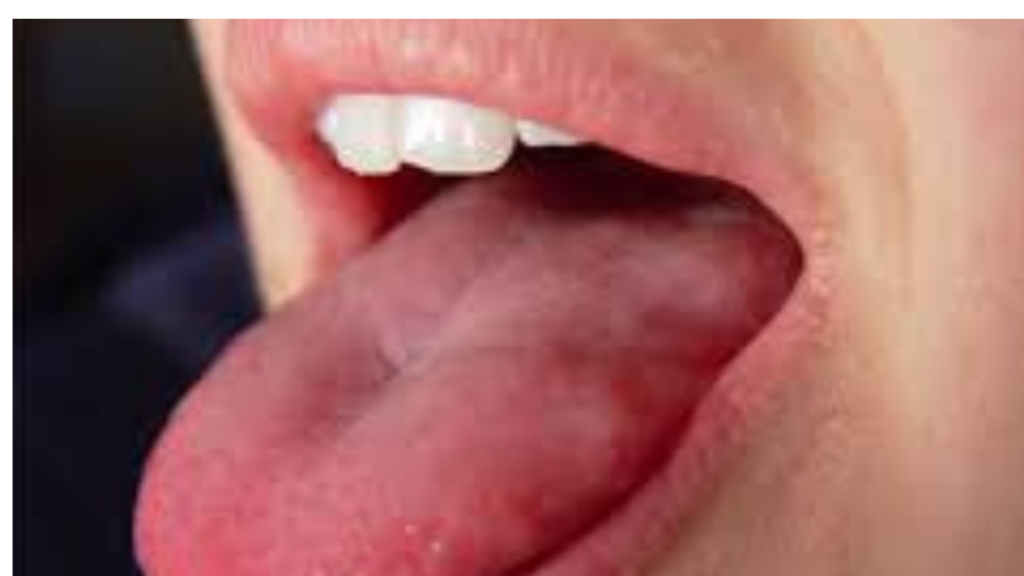A thyroid tongue, also known as a scalloped tongue, often serves as a visible clue to underlying health issues, including thyroid disorders like hypothyroidism.
This condition is characterized by swelling or indentations along the edges of the tongue, which occur due to pressure from the teeth. Pictures of a thyroid tongue can help identify key symptoms, such as enlarged tongue size, scalloped edges, and discoloration.
By recognizing these visual signs, individuals can seek timely medical evaluation to address potential thyroid imbalances or other related health conditions.
Table of Contents
Thyroid Tongue Pictures




FAQs: Thyroid Tongue Pictures
What is a thyroid tongue?
A thyroid tongue refers to tongue changes, such as swelling, indentations (scalloped edges), or discoloration, often linked to thyroid disorders like hypothyroidism.
Why are pictures important for understanding thyroid tongue?
Pictures provide visual examples of how a thyroid tongue appears, helping individuals identify similar symptoms and seek medical advice.
What does a thyroid tongue look like?
A thyroid tongue typically appears swollen, with wavy or scalloped edges caused by pressure from the teeth. It may also look pale or discolored in some cases.
How can I tell if I have a thyroid tongue from pictures?
Compare your tongue’s appearance to common characteristics in pictures, such as scalloped edges, tongue swelling, and any unusual coloring. However, only a doctor can confirm the diagnosis.
Are scalloped edges always related to thyroid issues?
No, scalloped edges can result from other causes like bruxism (teeth grinding), sleep apnea, or nutrient deficiencies. A medical evaluation is necessary to identify the cause.
What other symptoms should I look for alongside a thyroid tongue?
Symptoms of thyroid dysfunction may include fatigue, weight gain, cold intolerance, dry skin, and hair thinning, which could appear alongside changes in the tongue.
Can thyroid tongue pictures help with self-diagnosis?
Pictures can raise awareness of potential symptoms but should not replace professional diagnosis. Consult a doctor if you suspect thyroid-related issues.
How are thyroid tongue pictures taken?
High-quality, close-up pictures are typically taken under natural light, focusing on the tongue’s edges and overall size to highlight changes clearly.
Are there differences in thyroid tongue appearance in hypothyroidism and hyperthyroidism?
Thyroid tongue is more commonly associated with hypothyroidism, where swelling and scalloping occur due to fluid retention. It is less common in hyperthyroidism.
Can children have a thyroid tongue?
Yes, children with thyroid dysfunction may also exhibit tongue swelling or scalloped edges. However, the condition is more prevalent in adults.
What should I do if my tongue resembles the pictures of a thyroid tongue?
Schedule a medical appointment to evaluate your symptoms. Your doctor may recommend blood tests to check thyroid hormone levels.
Can thyroid tongue pictures show changes over time?
Yes, tracking pictures over time can show whether tongue swelling or scalloping improves or worsens, especially during treatment for thyroid disorders.
Are thyroid tongue pictures used by doctors?
Doctors may use images for medical education or to monitor patient progress, but they primarily rely on clinical evaluations and diagnostic tests.
What other conditions can mimic a thyroid tongue in pictures?
Conditions like sleep apnea, dehydration, anemia, allergies, or vitamin deficiencies can cause similar tongue changes, such as swelling or scalloped edges.
How can I improve the appearance of a thyroid tongue?
Treatment depends on the cause. For thyroid issues, hormone therapy may reduce swelling. Addressing bruxism, sleep apnea, or dietary deficiencies can also help.
Where can I find reliable thyroid tongue pictures?
Trustworthy medical websites, health forums, and doctor-reviewed articles are good sources for reliable thyroid tongue images. Avoid unverified social media posts.
Reference
- Kalan A, Tariq M. Lingual thyroid gland: Clinical evaluation and comprehensive management. Ear, Nose & Throat Journal. 1999;78(5):340-349. Retrieved from here
- Li JL, Zhao ZH, Rong S, Zhu K, Zhang XB, Li WH. Tongue texture may contribute to the assessment of malignant risk of thyroid nodules. Mol Clin Oncol. 2023 Sep 21;19(5):88. doi: 10.3892/mco.2023.2684. PMID: 37854324; PMCID: PMC10580254. Available here
- Chandna S, Bathla M. Oral manifestations of thyroid disorders and its management. Indian J Endocrinol Metab. 2011 Jul;15(Suppl 2):S113-6. doi: 10.4103/2230-8210.83343. PMID: 21966646; PMCID: PMC3169868. Retrieved from here
- Yagiela JA. Adverse drug interactions in dental practice: Interactions associated with vasoconstrictors. Part V of a series. J Am Dent Assoc. 1999;130:701–9. doi: 10.14219/jada.archive.1999.0280.
[DOI] [PubMed] - Sherman RG, Lasseter DH. Pharmacologic management of patient with disease of the endocrine system. Dent Clin North Am. 1996;40:727–52.
[PubMed] - Yagiela JA. Adverse drug interactions in dental practice: Interactions associated with vasoconstrictors. Part V of a series. J Am Dent Assoc. 1999;130:701–9. doi: 10.14219/jada.archive.1999.0280.
[DOI] [PubMed] - Galletti PM, Joyet G. Effect of fluorine on thyroidal iodine metabolism in hyperthyroidism. J Clin Endocrinol Metab. 1958;18:1102–10. doi: 10.1210/jcem-18-10-1102.
[DOI] [PubMed]
Also read:
